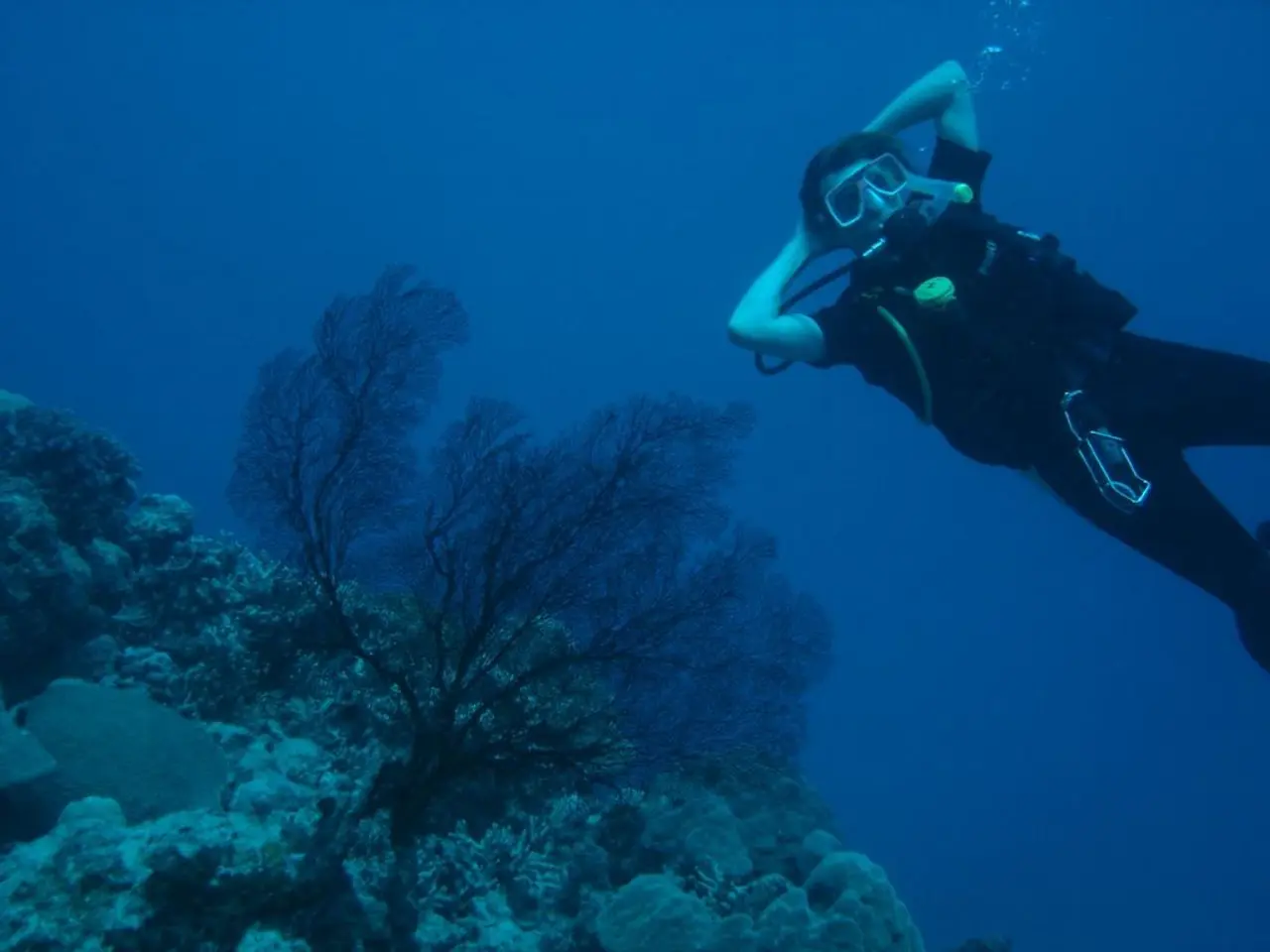Beach Diving Strategies for Enjoyable Underwater Adventures
In the sun-kissed coastline of Southern California, beach diving offers a unique blend of adventure and tranquility. With its clear waters teeming with marine life, it's no wonder that many divers flock to these shores for an unforgettable underwater experience. Here are some essential tips to ensure your beach diving excursion is both successful and safe.
**Preparation is Key**
Before venturing into the ocean, it's crucial to check the conditions. Factors such as swell, wind, tides, and their effects on waves, surge, and visibility should be considered. Swells can change rapidly, so studying tide charts and local reports can help avoid rough conditions or strong currents.
**Navigating the Waters**
Upon entering from the beach, establish clear entry and exit points and maintain awareness of your surroundings underwater. Using natural landmarks or a compass can help you safely navigate back. Shadowing a dive buddy and agreeing on hand signals also improve orientation, especially in murky water or currents.
**Camera Care**
After diving, rinse cameras and rigging thoroughly with fresh water to remove salt and sand that can corrode delicate parts. Disassemble and dry equipment carefully before storage to maintain functionality and longevity.
**Handling Your Gear**
Ensure your scuba gear is well-maintained and fully functional before each dive. Practice handling your rig confidently so you can efficiently operate it even in challenging conditions. Trusting your training and equipment can prevent emergencies and improve overall dive comfort.
**Safety First**
Always dive with a buddy and establish clear communication signals to watch out for each other in remote or challenging conditions. Carry emergency signaling devices like surface marker buoys, and know emergency protocols such as air sharing and controlled ascents. Stay hydrated and protect yourself from sun exposure before and after your dive.
**Navigating the Impact Zone**
To make the swim through the impact zone hassle-free, time your entry and exit immediately after a set of larger waves. This technique can help you navigate the turbulent waters more easily.
**Exploring Remote Sites**
Long hikes and swims may be required to access remote beach dive sites. Be prepared for these journeys, and remember to place gloves between the back of the housing and the BC to avoid scratching on long walks and hikes.
By following these tips, beach diving across diverse US locations can be both thrilling and safe. Whether you're a seasoned diver or a newcomer to the sport, these guidelines will serve as a valuable resource for your underwater adventures. Happy diving!
- A good guide for underwater photography, specifically for beach diving, includes tips on how to capture stunning shots of the diverse marine life present, such as nudibranchs and other vibrant reef inhabitants.
- To capture the brilliant blue waters and kelp forests in your DSLR, you might want to consider using a strobe to enhance the colors and contrast.
- For those interested in documenting their underwater adventures, a tutorial on sourcing, setting up, and using the necessary gear (such as underwater housing, lenses, and strobes) can be immensely helpful.
- A lifestyle that embraces outdoor-living and home-and-garden principles can greatly benefit from the therapy and tranquility found in underwater environments, especially through engaging in beach diving and photography.
- Protecting our marine life is crucial for preserving the beauty and diversity under the ocean's surface. As a responsible diver, be mindful of your actions, such as not touching coral or picking up shells.
- The exotic and colorful nudibranchs can be challenging to capture in focus given their small size and quick movements. Mastering the correct camera settings and techniques is essential for successfully capturing their impressive details and patterns.
- Beach diving can also unveil remote, lesser-known sites containing an abundance of marine life and unique images waiting to be captured. Prepare for any required trips or swims to access these untouched areas.
- Reliving your underwater adventures and sharing your photographs with others can be a source of inspiration for others to experience the joy of beach diving and ocean exploration.
- Micro-organisms such as nudibranchs play a significant role in the health and diversity of reef ecosystems. Through capturing and sharing their images, we raise awareness about their importance and the need to protect marine habitats.




